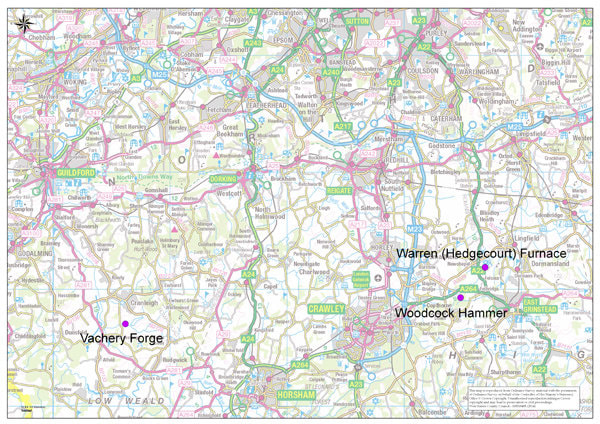|
My dissertation written as part of the MSc I studied a few years ago, looked at the subject of Ironmasters in the Weald and discussed their origins and their wealth. One of the six families chosen as part of the study was the Thorp family, who happen to appear in my own ancestry and the reason I became interested in the subject in the first place. To see where they fit into the family tree please visit my family tree. John Thorp lived during the Tudor times. His origin and date of birth are as yet unknown. He died in 1607 and was buried 25 March 1607 at Lingfield in Surrey. He married a daughter and heiress of _______ Bowett and they had 8 children. (Believed to be Alice Bowett). Through the course of my study I found a whole host of different records that helped to build a picture of John and his business even though he lived some 500 years ago and by reading a number of documents such as wills, leases and mortgages I discovered the extent of the property he had leased, from the Gage family, rich landowners in Sussex and the property he was eventually able to buy. The map shows the three ironworking sites that were associated with John Thorp and his sons in the Crawley area. I spent a number of days transcribing a variety of old documents at The Keep (the East Sussex Record Office) which proved very fruitful and interesting. I discovered that unlike the other ironworking families I studied, the Thorp family leased their furnaces and forges from the landowners along with the woods to supply the fuel for the furnaces. John was described as a yeoman and did not own any land or property of his own but by the time his will was proved in 1609 he left property and leases to his sons. The will clearly states how he left his lease of Hedgecourt (his home) and that would have included leases of his ironworks which went with the estate of Hedgecourt to his third son Thomas, overlooking his eldest son, John. (A story for another day perhaps!)
A later lease for 31 years dated 2 February 1629 between Sir John Gage of Firle and Richard Thorpe of Hedgecourt (a grandson) included ‘and all the iron forge or iron workes called or knowne as Woodcock Hammer or Woodcock works And all buildings upon any pte.’ I discovered documents that described agreements of sale and sale of timber giving exact instructions of which trees were to be cut down and how. I even discovered a draft bill that described how John and his son Thomas had been 'enjoying' since the death of John Gage the cutting down, stibbing and rooting up of most part of the woods to the value of £3000 they did not have permission to cut. For more information about the Iron Industry of the Weald visit the Wealden Iron Research Group website which has a wealth of information about the archaeology carried out on the industry and the people and places involved.
0 Comments
|
AuthorKerry Baldwin Archives
June 2023
Categories |
|
Copyright Kerry Baldwin 2024
|
Proudly powered by Weebly
|


 RSS Feed
RSS Feed
